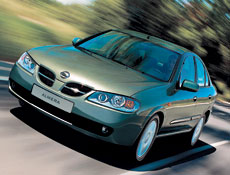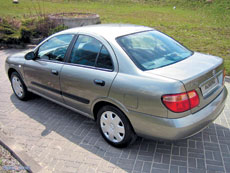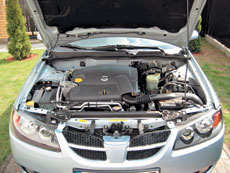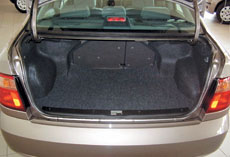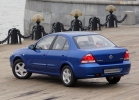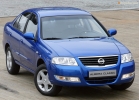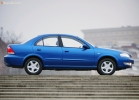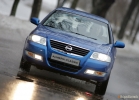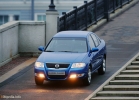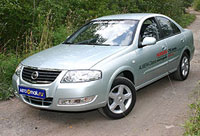Nissan almera Classic test drive since 2006 sedan
Bubble
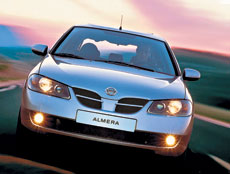 The second Nissan Almera with the N16 index is no longer the same reliable, like time, brick, but a completely different car. Stylish, with a claim to leadership in its class, but with all that more tender. But first things first.
The second Nissan Almera with the N16 index is no longer the same reliable, like time, brick, but a completely different car. Stylish, with a claim to leadership in its class, but with all that more tender. But first things first. The beginning of the new millennium in the world of cars was marked by a serious increase in the consumer qualities of such unassuming machines that, for example, Korean ones. And if you take into account that the Koreans are traditionally inexpensive, then the situation for European and Japanese manufacturers looks disappointing: they say, if there is no difference, then why overpay? The established Grands were forced to reconsider their policy, so as not to lose their positions. And this meant, inter alia, a decrease in quality, the use of cheaper materials, the second-generation Almera, which appeared in 2000, turned out to be a brainchild, to maintain the level of sales, the creators had to make some victims.
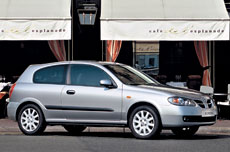 Outwardly, the second Almera is much more interesting than the previous one. The rounded, modern and even slightly aggressive it fits well into the automobile landscape of today's metropolis, but due to some standardization of the appearance, it is also easily lost in it. Almera is produced in the form of a sedan and a three- or five-door hatchback. Last year, by the way, the sedan was replaced by the even more unpretentious Almera Classic of Korean production. It is worth noting that in terms of resistance to corrosion, the current Almera is better than the previous model, but the problems, alas, have not completely disappeared: the wings and thresholds sometimes rot at old cars. In addition, the electrician in N16 is largely less reliable than the previous car. So, problems with wipers happen, sometimes electric drives of door locks are spontaneously triggered, it also happens that the Air-Bag control bulb blows on the instrument panel. But the most unpleasant thing is that in the headlights the nest under the light bulb can melt (therefore, you will need to replace the headlights assembled). Unhealthy trend
Outwardly, the second Almera is much more interesting than the previous one. The rounded, modern and even slightly aggressive it fits well into the automobile landscape of today's metropolis, but due to some standardization of the appearance, it is also easily lost in it. Almera is produced in the form of a sedan and a three- or five-door hatchback. Last year, by the way, the sedan was replaced by the even more unpretentious Almera Classic of Korean production. It is worth noting that in terms of resistance to corrosion, the current Almera is better than the previous model, but the problems, alas, have not completely disappeared: the wings and thresholds sometimes rot at old cars. In addition, the electrician in N16 is largely less reliable than the previous car. So, problems with wipers happen, sometimes electric drives of door locks are spontaneously triggered, it also happens that the Air-Bag control bulb blows on the instrument panel. But the most unpleasant thing is that in the headlights the nest under the light bulb can melt (therefore, you will need to replace the headlights assembled). Unhealthy trend 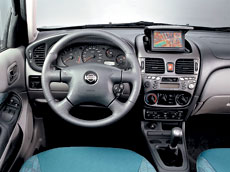 In terms of interior, progress in comparison with the previous model is obvious: it is quiet enough (although some competitors are still more comfortable in this regard), the design is memorable, the ergonomics are still good and the equipment is not bad. As for the space in the cabin, the Nissan Almera is no better, but no worse than most competitors, but what distinguishes it from many rivals an abundance of drawers and pockets for trifles. So in general, one could say that N16 in terms of internal arrangement, a step forward compared to previous N15. If it were not for one annoying nuance: the quality of the decoration materials here is lower than in the case of the 1995 Almera.
In terms of interior, progress in comparison with the previous model is obvious: it is quiet enough (although some competitors are still more comfortable in this regard), the design is memorable, the ergonomics are still good and the equipment is not bad. As for the space in the cabin, the Nissan Almera is no better, but no worse than most competitors, but what distinguishes it from many rivals an abundance of drawers and pockets for trifles. So in general, one could say that N16 in terms of internal arrangement, a step forward compared to previous N15. If it were not for one annoying nuance: the quality of the decoration materials here is lower than in the case of the 1995 Almera. The driving properties of Nissan almera are not memorable. And controllability, and accelerated dynamics, and inhibition are all at an average level. The suspension, however, is tough (which determines the low smoothness of the course), but the energy -intensive, reliable, allowing headlong to attack turns. The main trump card of this car is convenience in the city. The machine is maneuverable, its hard suspension controls the unpleasant body movements of the body well, Nissan Almera is famously rebuilt from a row to a row, only if it is bought in order to drive mainly along the tracks and at significant distances, it is better to look at another Renault Megane car, for example.
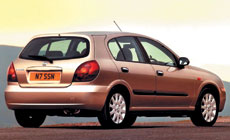 A significant part of the Nissan Almera N16, which has bolder in Russia, is driven by one of two gasoline engines: either a 1.5-liter engine (90 hp or 98 hp), or a power unit of 1.8 liters (114 liters. p. or 116 hp). At the same time, both the advantage and the lack of the named engines is compliance with the standards for the release of harmful substances EVRO 4: by advantage because the motors are clean, and the disadvantage is because the engines are poorly pulled at low speeds, and they are very sensitive to gasoline quality. Complete maintenance with oil replacement, all filters and candles (on the old almera, candles served twice as long) have to do every 15 thousand km. It’s overhead, but you don’t need to change the timing belt simply not, instead of it there is a durable chain of the gas distribution mechanism. In principle, we could say that both engines are quite reliable and durable, if not one but: an engine with a volume of 1.8 liters on some cars noticeably eat up oil. They say that this is caused by a factory defect. However, they also say that this defect has long been eliminated.
A significant part of the Nissan Almera N16, which has bolder in Russia, is driven by one of two gasoline engines: either a 1.5-liter engine (90 hp or 98 hp), or a power unit of 1.8 liters (114 liters. p. or 116 hp). At the same time, both the advantage and the lack of the named engines is compliance with the standards for the release of harmful substances EVRO 4: by advantage because the motors are clean, and the disadvantage is because the engines are poorly pulled at low speeds, and they are very sensitive to gasoline quality. Complete maintenance with oil replacement, all filters and candles (on the old almera, candles served twice as long) have to do every 15 thousand km. It’s overhead, but you don’t need to change the timing belt simply not, instead of it there is a durable chain of the gas distribution mechanism. In principle, we could say that both engines are quite reliable and durable, if not one but: an engine with a volume of 1.8 liters on some cars noticeably eat up oil. They say that this is caused by a factory defect. However, they also say that this defect has long been eliminated. 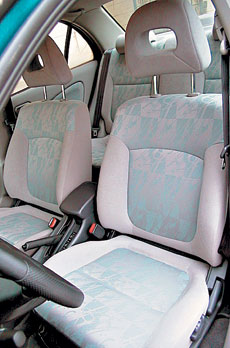 ALMERA engines were combined with gearboxes (checkpoints) of two types of automatic and mechanical. Both checkpoints showed themselves well, demanding oil replacement once every 60 thousand km. No problems, however, did not do: sometimes mechanical gearboxes fail, namely the bearings are noisy. If the disease is in an early stage, then the checkpoint can be repaired, but if it is launched, prepare the money for a new transmission.
ALMERA engines were combined with gearboxes (checkpoints) of two types of automatic and mechanical. Both checkpoints showed themselves well, demanding oil replacement once every 60 thousand km. No problems, however, did not do: sometimes mechanical gearboxes fail, namely the bearings are noisy. If the disease is in an early stage, then the checkpoint can be repaired, but if it is launched, prepare the money for a new transmission. In terms of the reliability of engines and checkpoints, we are still observing a continuous regression compared to the previous Almera. But at least one thing is happy: the suspension is as strong and hardy as the previous car. The main details serve for a very long time: levers (ball supports and silent blocks) in the regular operating conditions there are 120-150 thousand km, shock absorbers about the same. Antratenses of the CHRUS and shock absorbers in N16 are the same weak place as that of N15: they can also be covered with cracks over time. And then the following can happen: water will penetrate inside the mechanisms or, conversely, lubrication will be pulled out of there, so that the condition of the covers must be controlled from time to time. The steering is reliable, the rails flow or knock exclusively rarely, there will be no other worries, except for the replacement of steering rods every 70-80 thousand km. Well, the braking system is that the Japanese are accustomed to carefully and closely dock all the details of the cars they produce, therefore, the mud that has begun into any mechanism, which will not affect the performance of the European or American machine, can significantly affect Japanese behavior (roads- then we are by no means sterile). Keep this in mind. And so the front brake pads serve 25-30 thousand km (discs two and two and a half longer), the rear drum over 60 thousand km.
The following picture emerges: the Nissan almera N16 has much brighter, the salon is much more convenient, the consumer properties are generally better than the predecessor, but its former troubles are no longer observed. No, the car is still quite reliable and it will not be in vain for its master, but still there are more problems with it than with the elderly N15. Nowhere to go: reliability becomes the main criterion for choosing a car when it gets to the secondary market. For new machines, it is not so relevant (a guarantee for what, one wonders?). Therefore, the buyer must be conquered in other ways, going for some compromises. Art, as they say, requires sacrifice.
The advantages and disadvantages of the model
Advantages
Relative availability
Convenient salon
Good maneuverability
High quality manufacturing
Good controllability
Flaws
Weak engines
The predecessor was more reliable
Hard suspension
Dear spare parts
Loarry appearance
